وانصحكم بحفظ الصفحة قبل ماتدوخ رؤسكم لانه كورس مكثف بقوه…
و بحاول أنقله كله علشان خاطر اللي يبون يتعلمونEnglish
الدرس الأول : تركيب الجملة في اللغة الإنجليزية
الجملة في اللغة الإنجليزية كما هو معروف تتكون من ثلاث أشياء رئيسية :
Subject …الفاعل
Verb ..الفعل
Object المفعول به
والكثير من الطلبة والطالبات يخطئن في هذا التركيب الذي لايتغير فهو قاعدة ثابتة
مثال على ذلك :
They study geography ,,,,,,,,هم يدرسون الجغرافيا
They ……Subject
study….Verb
geography…Object
إذا إتبعنا الترتيب الصحيح
أولا ..S
ثانيا ..V
ثالثا ….O
الكثيرون يخطؤون ويرتبوا الجملة حسب القواعد العربية
فيقولون مثلا:
Study they geography
إذا من الخطأ أن نبدأ بالفعل في اللغة الإنجليزية كما في العربي
فكل لغة لها قواعدها الخاصة بها ..
والجملة في اللغة الإنجليزية تحتم وضع الفاعل أولا ثم الفعل ثم المفعول به ..
_________________________ ____________________
الدرس الثاني : الضمــــــــــــــــائر
Pronouns
في البداية لابد أن نعرف ماهو الضمير (pronoun) ؟
الضمير في اللغة الإنجليزية ..( كلمة تحل محل أو تأتي بديلا ل إما الإسم Noun)) أو العبارة الإسمية (Noun phrase).
مثال
Samia eats apple
لو أردنا إستبدال إسم سامية بضمير الأنثى تصبح
She eats apple
#وللضمائر في اللغة الإنجليزية تسعة أنواع سنشرحها شرحا وافيا#
أولا : ضمائر إسم الإشارة Demostrative pronouns
وهي التي تستخدم فيها أدوات الإشارة
ويندرج تحت هذا النوع عدة ضمائروهي :
(this/that/these/those/such)
أمثلة
That is incredible!
I will never forget this
Such is my belief
ثانيا # الضمائر الشخصية Personal pronouns
وهي التي تمثل أشخاص أو أشياء
وهي تنقسم قسمين
إما أولا * الضمائر الشخصية التي تحل محل الفاعل أو من فعل الفعل
أو هي التي تسبق الفعل Subject personal pronouns
ويندرج تحتها الضمائر التالية #
I, you ,he , she , it , we
I , he , she , it هذه تستخدم للمفرد
We تستخدم للجمع
You تستخدم في كلتا الحالتين مفرد وجمع
أمثلة
She took the bus last night
He is aschool boy .
We are Muslims .
I stayed at home.
You need another blanket.
.
ثانيا * الضمائر الشخصية التي تحل محل المفعول به
أو هي التي تأتي بعد الفعل والفاعل Object personal pronouns
وهي نفس السابقة لكن محولة إلى ضيغة المفعول به لأنها تستخدم بداله
وهي
Me ,you , him , her ,it , us
أمثلة
John took it
Umar gave me abook
We sent you a letter.
He adores her.
I saw it with my own eyes.
They have just invited us to their wedding.
We went with him.
ثالثا # الضمائر الملكية Possesive pronouns
وهي التي تفيد الملكية أو ملكية شيء معين لشخص أو ماإلى ذلك
ويندرج تحت هذا النوع الضمائر التالية #
Mine , yours ,his , hers , ours , yours , theirs
أمثلة
This book is mine.
This pencil case is yours.
Mary is a relative of his.
I’ve found hers.
Ours need watering.
Yours are bigger than mine.
These are your notebooks and those are theirs.
رابعا # الضمائر الإنعكاسية Reflexisive pronouns
وهي التي تشير إلى الفاعل وتنعكس عليه وتصاغ عن طريق إضافة Self للمفرد أو selves للجمع إلى الضمائر التالية #
my, your, our, him, her, it, them
فتصبح
myself
yourself
himself
herself
itself
ourselves
yourselves
themselvesأمثلة
She made this skirt herself
The queen herself was among the demostrators.
The mayor himself spoke for the abolition of the dealth penalty.
خامسا# الضمائر الاستفهامية Interrogative pronouns
وهي الضمائر التي تستخدم في صيغة الأسئلة أو لفرض سؤال معين وهي التي تبدأ ب Wh
وهذه الضمائر هي :
what, which, who, whom, and whose. أمثلة / Examples
What did you say?
ماذا قلت ؟
Who said that?
من الذي قال ذلك ؟
Which do you prefer?
ما لذي تفضله؟
وهكذا …
سادسا #ضمائر النفي أو الضمائر المنفية Negative pronouns
وهي التي تستخدم لنفي العبارة أو الجملة الاسمية
وهذه الضمائر هي
no-one, nobody, neither, none and nothingأمثلة
لا يوجد Nobody is here .
She is neither a British nor American :
هي ليست بريطانية ولا أمريكية
سابعا # ٌالضمائر التبادلية Reciprocal pronouns
وهي التي تفيد وتشير إلى تبادل شيء معين بين شخصين
وهذه الضمائر هي :
each other / one anotherمثال :
لو كتب خالد إلى أخته سامية رسالة وكذلك كتبت سامية رسالة إلى أخيها خالد نقول إذا
They write to each other / one another once a month.
كلاهما صحيح ..
ثامنا# ضمائر الوصل
Relative pronouns
وهي التي تربط مجموعة من الكلمات بأسماء معينة أو ضمائر أخرى
وهي :
(who/whoever/which/that)امثلة :
The student who studies hardest usually does the best
الطالبة التي تدرس جيدا هي التي تقدم الأفضل عادة .
تاسعا وأخيرا # الضمائر الكمية Quantifier وهي تفيد الكمية والمقدار
وهي :
some, any, something, much, many, little, few , a lot أمثلة
I have few literary books.
أنا أملك بعض كتب الأدب
They like orange so much
هم يحبون البرتقال كثيرا
الدرس الثالث : الأسماء
(Nouns)
ملاحظة / أحبائي نظرا لأن الدرس شوي طويل لذلك قسمته على جزأين
ماهو الاسم ؟What is a noun ?
الاسم في اللغة الإنجليزية هو : اسم شخص (person) أو شيء (a thing) أو مكان ( a place ) أو اسم حيوان (an animal ) أو فكرة ( an idea ) وأي شيء يمكن أن يسمى يطلق عليه إسم أي ( Noun ) .
ويجب أن نعرف دوما في حال وجود A/an/the قبل كلمة معينة فهذا يعني أن ما بعدها مباشرة هو إسم (Noun).
تعالوا معا نشاهد بعض الأمثلة على الأسماء (Nouns) :
dog, cats, women, Sally, justice, strength, departure, apples, England, California, Steve Young, mice, school, beach, kindness, food
طيب تعالوا نشوف أمثلة في جمل على الأسماء وراح نطبق التعريف عليهم:1. Sahar and Nora made a cake.
سحر ونورة قاموا بعمل كيكة .
(أسماء أشخاص +شيء)
2. The moon is far away from the earth.
القمر يبعد عن الأرض.
(أسماء أماكن)
3. His kindness was appreciated.
لقد كان لطفه مستحسنا.
(إسم فكرة )
4. The plane will depart in twenty minutes.
ستقلع الطائرة بعد عشرون دقيقة.
(إسم شيء)
# الفرق بين الاسم الحسي والاسم المجرد (المعنوي):Concrete & abstract nouns
(concrete N) الاسم الحسي
هو إسم الشخص أو المكان أو الشيء الذي تستطيع إدراكه بحاسة أو أكثر من حواسك الخمس .
ُExamples:
honey>>>>>>>عسل
pillows>>>>>>>>وسادات
fish>>>>>>>>>سمك
juice>>>>>>>>>عصير إذا كل هذه الأسماء نستطيع إدراكها بحاسة أو أكثر من حاسة من الحواس الخمس سواء بالنظر أو الشم أو التذوق ……..إلخ
# الاسم المجرد (المعنوي )
Abstract N
وهو أي إسم غير محسوس ولايمكن لمسه بالحواس : مثل المشاعر والصفات والمزايا والأفكار أي أشياء معنوية
Examples/ أمثلة
Thought>>>>>>>>فكرة
Wisdom>>>>>>>>حكمة
Freedom>>>>>>>>الحرية
Creativity>>>>>>>الابتكار
تعالوا نشوف أمثلة في جمل :
. I could smell dinner *****ng.
(Concrete N ) أستطيع شم طهو الغداء
I don’t have much knowledge on the subject, Professor.
(abstract N) ليست عندي أي خلفية أو علم عن الموضوع يابروفسور
# الآن نشوف الفرق بين الاسم الخاص والعام
Proper & common Nounsأولا : الاسم الخاص
Proper N
وهو الاسم الذي يمثل شخص معين أو مكان معين أو شيء معين . وهو دائما يكتب بالحرف الكبير . ولو نلاحظ أن أسماء أيام الأسبوع والشهور والمناسبات التاريخية والمعاهد والمنظمات والديانات كلها تعتبر أسماء خاصة وتكتب بالحرف الكبير (أقصد أول حرف من الكلمة ) .
Examples/ أمثلة
Nora نورة
Ramadan رمضان
Friday يوم الجمعة
Christianity المسيحية
Islam الإسلام
الحرب العالمية الأولىFirst World War
I will go with Sara tomorrow .
وهذه الأسماء كما قلت تكتب بالحرف الكبير سواء كانت في بداية أو وسط أو آخر الجملة.
# الاسم العام
Common Nounهو عكس الاسم الخاص تماما في كل شيء فهو الاسم الذي يعود إلى شخص أو مكان أوشي عموما وليس على وجه الخصوص . عادة هذه الأسماء تكتب بداياتها بحرف صغير ماعدا في حالة واحدة إذا كانت في بداية الجملة تكتب بالحرف الكبير .
Examples/ أمثلة
This woman is my sister .
هذه الإمرأة هي أختي .
This is my leader .
هذا هو قائدي .
# صيغة المفرد والجمع في الاسم :
Plural & singular forms
الأسماء عادة تكون بطبيعتها مفردة لكن إذا أردنا أن نجعلها في صيغة الجمع نضيف لها
S أو es
مثال :
Friend مفرد
Friends جمع حسب نهاية الجملة فكل الأسماء حينما نريد جمعا نضيف
S
في نهاية الجملة ماعدا إذا كانت الكلمة أو الاسم منتهيا بإحدى الحروف التالية :
X , O , S , Sh , Ch , Z
فإننا حين نجمعها نضيف
Es
أمثلة :
Box >>>>>>>>>>>>Boxes
Wash >>>>>>>>>>>>>washes
Buzz>>>>>>>>>>>>buzzes
Class>>>>>>>>>>>>classes
وتحتوي صيغة الجمع في الاسم على قاعدة شاذة لبعض الأسماء حيث حين نود جمع كلمة معينة لا نضيف لها
S/es
لكن يتغير شكل الكلمة كليا لذلك يجب أن تحفظ
أمثلة
Man >>>>>>>>men
Child >>>>>>>>children
Mouse>>>>>>>>>mice
Foot>>>>>>>>>feet
Goose >>>>>>>>>geese
Tooth >>>>>>>>>>teeth
Ox>>>>>>>>>>oxen
Woman>>>>>>>>women
louse>>>>>>>>>liceحينما نقوم بجمع كلمة تنتهي بحرف %
Y
ومسبوق بحرف ساكن (الحروف الساكنة هي كل حروف اللغة الإنجليزية ماعدا خمسة منها وهي
(I , o , u , e , aوهذه هي حروف العلة
نحذف حرف
Y
ونضيف بداله حرف
I
مثال:
One country >>>>>>>>>>three countries
أما إذا كان حرف الواي
Y
مسبوق بأحد حروف العلة الخمسة التي قلتها سابقا
نقوم فقط بوضع ال
S
بدون أي تغيييييييييير
مثال
Toy>>>>>>>>>toys
هناك كلمااااااات تنتهي بحرفي إما
F / fe وهذه نحولها إلى
Ves
مثال
Leaf >>>>>>>>>leaves
إنتهى الجزء الأول من الدرس وإلحين فسحة
الجزء الثاني من الدرس
قبل ما نكمل الجزء الثاني أخواني فيه نقطة أحب أذكرها : طبعا فيه بعض الأسماء لها نفس الصيغة سواء في المفرد أو الجمع ..أمثلة
Dear>>>>>>>>>>dear
Fish>>>>>>>>>>>fish
Means>>>>>>>>>>>>means
Series>>>>>>>>>>series
Sheep>>>>>>>>>>sheep
Species>>>>>>>species**** **********
الأسماء الملكية Possessive Nouns
وهي الأسماء التي تثبت ملكية شيء معين إلى شخص معين ..
أولا : في حالة المفرد أي إذا كان الاسم مفردا نقوم بصياغة الملكية عن طريق إضافة الفاصلة العليا ثم
Sهذه أمثلة على الأسماء المفردة :
The girl
My wife
A lady
Naser
نصيغها في الملكية تصبح :
The girl´s
Naser´s
My wife´s
A lady´s
وهذه جمل توضح الملكية للمفرد:The red suitcase is Cassandra’s.
الشنطة الحمراء هي لكساندرا (أي هي ملك لكاساندرا)
This is Naser´s pen .
هذا قلم ناصر ( يملكه ناصر)
ثانيا: في حالة الجمع نقوم بصياغة الملكية عن طريق (العكس) إضافة
S
ثم الفاصلة العليا
أمثلة :
The girls>>>>>>>>>>the girls´
Their wives >>>>>>>>their wives´
The ladies >>>>>>>>the ladies´إذا لو لاحظنا إنه هذه الأسماء في صيغة الجمع بعكس السابقة في حالة المفرد لذلك كل حالة لها خاصية في صياغة الملكية .
# أخواني هل تتذكرون في الجزء الأول من الدرس يوم وضحتلكم إنه فيه بعض الأسماء شاذة ماتنجمع بالطريقة العادية عن طريق إضافة
S
وهذا هي :
Man >>>>>>>>men
Child >>>>>>>>children
Mouse>>>>>>>>>mice
Foot>>>>>>>>>feet
Goose >>>>>>>>>geese
Tooth >>>>>>>>>>teeth
Ox>>>>>>>>>>oxen
Woman>>>>>>>>women
louse>>>>>>>>>lice
ضيغة الجمع من هذه الأسماء لو أردنا ضياغة الملكية منها نقوم بإضافة فاصلة عليا ثم حرف
Sيعني مثل حالة المفرد
أمثلة :
The men>>>>>>>>>>the men´s
My children>>>>>>>>>my children´s
************
# الأسماء المعدودة والغير معدودة
Countable & Non-Countable Nouns
لابد أن نعرف الفرق بين الإثنين وهما عكس بعضهما
أولا : الأسماء المعدودة Countable Nouns
وتشمل الأسماء التي يستطيع أي شخص عدها ولاتمثل صعوبة في العد مثل: التفاح ..الأقلام..الخيار ..الكراسي ..الكتب …إلخ
يعني أشياء نقدر أن نحصيها ..وهذه الأسماء يمكن صياغة المفرد والجمع منها
مثال :
Book >>>>>>>>>>books
نشوف أمثلة في جمل:
We painted the table red and the chairs blue.
قمنا بطلاء الطاولة الحمراء والكراسي الزرقاء .
إذا من شروط الإسم المعدود :
1-قد يكون مسبوقا ب
A/an
في حالة المفرد
2-ينتهي بـ
S/es في حالة الجمع
* وقد نستخدم العبارات التالية قبل الإسم المعدود لإفادة الكثرو أو الجمع مثل .
Many , a lot of ,some , two , three . fourوأي عدد ..
A chair >>>>>>>>>> many chairs
A chair >>>>>>>>>> a lot of chairs
A chair >>>>>>>>>> some chairs
A chair >>>>>>>>>> three chairs
ولو حبينا نسأل نستخدم
How many ……..?
مثال:
How many apples are there?
ثانيا : الأسماء غير المعدودة Non-Countable Nouns
(or mass noun)
هي الأسماء التي من الصعب والمستحيل أن نحصيها ونقوم بعدها لصعوبة ذلك في الحقيقة .
مثل : الأثاث ، الأوكسجين, الأرز , العصير و الماء ….إلخ
من شروط الإسم الغير معدود :
1- ليس مسبوقا بـ
A/an
2- لايمكن صياغة الجمه منه بإضافة
S/esيمكن إضافة كلمات تدل على الجمع فقط مثل:
Much , a lot of , some
water>>>>>>>>>>>>> some water
water>>>>>>>>>>>>>a lot of water
water>>>>>>>>>>>>>much water
ولو حبينا نسأل نستخدم
How much………?
لذلك لابد نفرق بين الإثنين عشان نطبق القواعد الصحيحة على كل حالة
الدرس الرابع : الأفعال
Verbs
ماهو الفعل؟
What Is A Verb?
الفعل: هو أهم جزء في أي جملة . وهو يدل على الحدث المرتبط بالفاعل.
والفعل عادة في اللغة الإنجليزية يقع بعد الفاعل مباشرة كما عرفنا سابقا ..
Subject + Verb+ Object
مثـــــــــــــال:
Salem reads a book .
يقرا سالم كتابا .
ومن الخطأ الفادح أن نضع الفعل في بداية الجملة كما في اللغة العربية لكن نتبع القاعدة السابقة فاعل ثم فعل ثم مفعول به
وليس
فعل ثم فاعل ثم مفعول به
# تنقسم الأفعال في اللغة الإنجليزية إلى قسمين :
1- الفعل لوحده (a verb)
أي فعل واحد فقط لايصاحبه شيء
مثال:
I come from Canada.
أنا من كندا
فالفعل هنا واحد غير مركب (come)
2- الفعل المركب ( Compound Verb )
أي الفعل الذي يتكون من جزئين
مثال :
It will snow tomorrow.
سوف تثلج غدا .
فالفعل هنا (will snow)
مكون من جزئين فعل مساعد Willوالفعل snow
_________________________ _______________
وتنقسم الأفعال في اللغة الإنجليزية تبعا للزمن إلى ثلاثة أقسام :
الفعل المضارع وأنواعه Present simple
الفعل الماضي وأنواعهpast simple
الفعل المستقبلي وأنواعه Future
وسنتطرق للأنواع في الدروس القادمة بإذن الله .
# هناك أفعال منتظمة وأفعال غير منتظمة
Regular verbs & Irregular Verbs
الأفعال المنتظمة هي التي لايتغير شكلها بتغير الزمن مثلا من مضارع إلى ماضي إلا أننا نقوم بإضافة إضافات بسيطة على الفعل تفيد بتغير الزمن لكن الشكل الأساسي والعام للفعل لايتغير .
مثـــــــــــال:
We talk to our father.
نحن نتكلم مع أبينا (فعل مضارع ) والفعل ( talk)
لو أردنا تحويل نفس الجملة من المضارع إلى الماضي نقوم فقط بإضافة ed فتصبح الجملة:
We talked to our father.
نحن تكلمنا مع أبينا .
Talk >>>>>>>>>>>>>>>talked
الأفعال الغير منتظمة هي التي يتغير شكلها كليا بتغير الزمن مثلا من مضارع إلى ماضي لانضع edفي آخر الفعل . وهي أفعال محدودة يجب حفظها وفهمها والتدرب على إملائها .
مثال:
They go to school.
هم يذهبوا إلى المدرسة
فالفعل هنا Go نريد تحويله إلى زمن الماضي لانقوم بإضافة ed
فتصبح الجملة :
They went to school
هم ذهبوا إلى المدرسة .
فلو نلاحظ هنا أن افعل تغير تماما في شكله من
Go >>>>>>>>>>>>>went
ولم نقم بإضافة ed في نهاية الفعل Go
وهناك الكثير من الأفعال الشاذة التي سأحاول كتابة معظمها لاحقا.
الدرس الخامس : المضارع البسيط
Present simple
What do we mean by ( Present simple)?
ماذا نعني بالزمن المضارع البسيط؟
هو: الفعل الذي نستخدمه للتحدث عن حدث معين لا يحدث في الماضي بل يحدث الآن في الأوقات الحالية وهذا الحدث يحدث بتكرار أو عادة أو إنه حقيقة ثابتة لاتتغير أو شيء من المتعارف عليه أنه صحيح.ولابد أن نفرق بين المضارع البسيط Present simple والمضارع المستمر present continous
وهذا ماسأتطرق له في دروس قادمة إ شاء الله .
# تعالوا نشوف طريقة صياغة الفعل المضارع البسيط
How to form present simple?
طبعا عندنا طريقتين لصياغة المضارع البسيط
Present simple
أولا: Subject + verb (s) +object
إذا فاعل ثم الفعل مضافا معه حرف الـ (s) الملحقة بالفعل ثم المفعول به
لكن فيه ملاحظه مهمة هنا إنه : لابد إضافة حرف ال (s) في الفعل في حالة توفر شرطين ضرورين:1- الشرط الأول :إذا كان الفاعل في بداية الجملة عبارة عن الضمائر التالية
He , She , It
إذا لو توفرت هذه الثلاث الضمائر في محل الفاعل كان من الضروري وضع حرف ال (s) في الفعل الذي يلي الفاعل
حرف ال (s) يساوي العالم كله
أمثلة / ExamplesHe sings in his room.
هو يغني في غرفته.
She eats the apple.
هي تأكل التفاحة
It snows in Alaska
إنها تثلج في ألاسكا .
إذا في جميع الأمثلة السابقة لاحظنا وجود حرف ال (s) ملحوقا بالفعل المضارع والسبب ؟؟
هو أن الفاعل هو إما He , She , it
أما الضمائر الأخرى فلاتتبع نفس القاعدة أي
We , they , I , you فإذا تبعها العل يوضع كما هو بدون إضافة حرف الـ (s)
2- الشرط الثاني هو إذا كان الفاعل يعود على إسم مذكر أو مؤنث أو جماد أي غير عاقل .
إذا في هذه الحالة نضيف حرف ال (s) ملحقا بالفعل المضارع
أمثلة /ExamplesNaser sings in his room .
يغني ناصر في غرفته
إذا ناصر إسم يعود إلى شيء مذكر
Faten eats the apple.
تأكل فاتن التفاحة.
إذا فاتن إسم يعود إلى مؤنث
The Internet stops suddenly.
توقف الإنترنت فجأة
إذا الإنترنت إسم غير عاقل أو جماد .
ثانيا:
Subject + verb +object
إذا فاعل ثم الفعل من غير إضافة حرف ال ( s) ثم المفعول به
وحتى نطبق هذه القاعدة لابد من توفر الشرط التالي * في حالة توفر الضمائر التالية في محل الفاعل وهي
I , you , they ,we أمثلة / Examples
They watch the T.V every day.
هم يشاهدوا جهاز التلفاز يوميا
We watch the T.V every day.
نحن نشاهد جهاز التلفاز يوميا .
You watch the T.V every day.
أنت تشاهد جهاز التلفاز يوميا.
I watch the T.V every day.
أنا أشاهد جهاز التلفاز يوميا.
إذا لابد من تفادي خطأ وضع حرف الـ (s) فلانقول:
They watches the T.V every day.
وممكن أن نضع الـ (s) لو كان بدل They وجود
He , She ,it
• في زمن المضارع البسيط نستخدم ثلاث أفعال مساعدة :وهي : Is , am , are
Is >>>>>>>>>>>>>>>>>>>singul ar تستخدم ال (is) مع الأسماء أو الضمائر المفردة (She , He , it )
أمثلة:
She is a muslim .
هي مسلمة
He is a muslim .
هو مسلم .
It is a nice book.
هو كتاب جيد.
Huda is a muslim girl.
هدى فتاة مسلمة .
Are>>>>>>>>>>>>>>>>>>>>pl ural نستخدم الفعل المساعد Are مع الضمائر (They ,we , you) أو الأسماء الجمع وليست المفرد
أمثلة :
They are Muslims.
هم مسلمين .
We are Muslims
نحن مسلمين.
You are Muslim.
أنت مسلم .
أما الفعل المساعد Am نستخدمه فقط مع الضمير I فقط لاغير .
مثال :
I am from Saudia Arabia.
أنا من المملكة العربية السعودية.
ومن الأخطاء الفادحة أن نضع مع الضمير I الفعل المساعد is أو الفعل المساعد are
وكما قلت سابقا إستخدامات كل فعل مساعد (Helping verb) مع الضمائر الموضحة .
متى نستخدم الفعل المضارع البسيط؟
When to use the present simple?
أولا/ نستخدمه مع الحدث الذي يحدث عادة كروتين إما كل يوم أو كل إسبوع وهكذا .Actions which happen regularly (every day, every week, etc.)
أمثلة /Examples
They go to school every day.
هم يذهبون للمدرسة كل يوم .
إذا الذهاب للمدرسة حدث من المعتاد عليه يوميا فهو روتين يومي.
She takes ashower every Friday.
هي تستحم كل يوم جمعة.
إذا هذا حدث معتاد لها القيام به كروتين كل نهاية إسبوع.
ثانيا /الأشياء التي لاتتغير مثل ( الحقائق العلمية , الأفكار…) أمثلة /Examples
The sun rises from the east.
تشرق الشمس من الشرق
وهذه حقيقة علمية لاتتغير فمن المتعارف عليه أن الشمس نشرق من الشرق
The earth goes round the sun.
وهذا أيضا حقيقة علمية لاتتغير وهو أن أن الأرض تدور حول الشمس .
ثالثا / يستخدم مع الأشياء التي عموما نعرف أنها صحيحة لايختلف عليها إثنان Nurses look after patients in hospitals.
تعتني الممرضات بالمرضى في المستشفيات وهذا شيء صحيح لايختلف عليه إثنان .
* Do / Does
الفعل do يأخذ الضمائر التالية :
I , you , they ,we أما الفعل does يأخذ الضمائر التالية :
He , she ,it
& وحتى ننفي حدث معين نضيف كلمة not إلى Do / Does
Do / Does+ not
أمثلة :
I do not like rice.
انا لاأحب الأرز .
She does not like rice.
هي لاتحب الأرز .
How to form questions in present simple?
كيف نصيغ السؤال في المضارع البسيط؟نقوم فقط بعملية المقص
أمثلة :
She is amuslim.
حينما نحول الجملة هذه إلى سؤال نضع الفعل في البداية ثم الفاعل ونكمل بقية الجملة ثم نضع علامة الإستفهام
إذا حسب القاعدة التالية:
V+Subject+the rest of the sentence + ?
فيصبح السؤال؟
Is she amuslim?
وقد لايتوفر أصلا في الجملة الفعل المساعد لذلك نضيفه نحن في السؤال حسب مايناسب الفعل إذا كان مفردا أو جمع.
مثال
They watch the T.V every day.
فيصبح السؤال :
Do they watch the T.V every day?
* عادة نستخدم مع المضارع البسيط الكلمات التالية :
Always, usually, often .
طبعا إلحين إنتهى درسنا وأتمنى يكون مفهوم وأي سؤال أنا حاضرة ومافي فسحة ألين كل وحدة تروح لقسم الواجبات وتحل التمارين المطلوبة .
الدرس السادس: Present Continuous
زمن المضارع المستمر
* كثير من الطالبات والطلاب لا يستطيعوا التمييز ما الفرق بين زمن المضارع البسيط وزمن المضارع المستمر أو الأزمنة الأخرى لذلك سأتطرق اليوم لهذه النقطة خلال درسنا اليوم حبيباتي فلننتبه جيدا إلى الفروق .
في البداية ماذا نعني بالزمن المضارع المستمر؟
What do we mean by the term Present Continuous?
لو نلاحظ من الإسم (مستمر ) أي مازال في الإستمرار بعكس المضارع البسيط فقد ينتهي بعد مدة معينة .
إذا هو الزمن الذي يعود على حدث لفعل معين يحدث الآن في هذا الوقت ومازال الحدث مستمرا وقد يتوقف وقد لايتوقف إذا الحدث مستمر وليس في الماضي أو المستقبل .
* متى نستخدم الفعل المضارع المستمر؟
When to use the Present Continuous?
إذا في حالات معينة تستخدم المضارع المستمر تعالوا مع بعض نشوف هذه الحالات:
أولا/ في حالة التعبير عن عمل أو حدث أو نشاط معين بأنه مازال مستمرا في الوقت الذي يتكلم فيه الشخص .وهذا الحدث في زمن المضارع الحالي .وهذا العمل والحدث من المحتمل أن ينتهي في المستقبل . وغالبا ما تستخدم هنا كلمة
Now
أمثلة / Examples
Naser and Mohammad are playing football now .
ناصر ومحمد يلعبون الآن كرة القدم
إذا لو نلاحظ هنا الحدث هنا هو لعب كرة القدم وهذا الحدث مازال مستمرا الآن في زمن التكلم وقد ينتهي قريبا في المستقبل القريب أي قد ينتهي ناصر ومحمد من لعب الكرة بعد ساعة أو ساعتين . إذا الحدث هنا فيه إستمرارية ((اللعب بالكرة))
لذلك نستخدم المضارع المستمر وليس المضارع البسيط .
ثانيا/ في حالة التعبير عن عمل أو حدث أو نشاط معين حدث في الماضي ومازال مستمرا في وقت المتكلم ومن المحتمل أن هذا الحدث قد يستمر في المستقبل لوقت غير محدد والذي قد يكون إما زمن طويل أو قصير .
أمثلة / Examples
Salem is working for an oil company.
يعمل سالم في شركة للبترول.
إذا الحدث هنا وهو ((العمل في الشركة )) بدأ في الماضي وهو مازال مستمرا الآن أي أن سالم مازال يعمل في الشركة وعمل سالم في الشركة سيتمر في المستقبل إلى أجل غير محدد . إذا الحدث هنا ((العمل)) يدل على الإستمرارية وعدم الثبات لذلك لا نستخدم المضارع البسيط.
Mary is studying music in New York.
تدرس ماري الموسيقى في نيويورك














 شرح البرنامج
شرح البرنامج




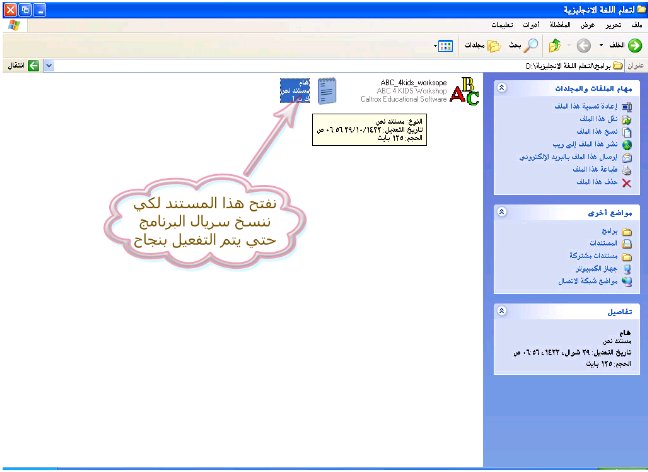
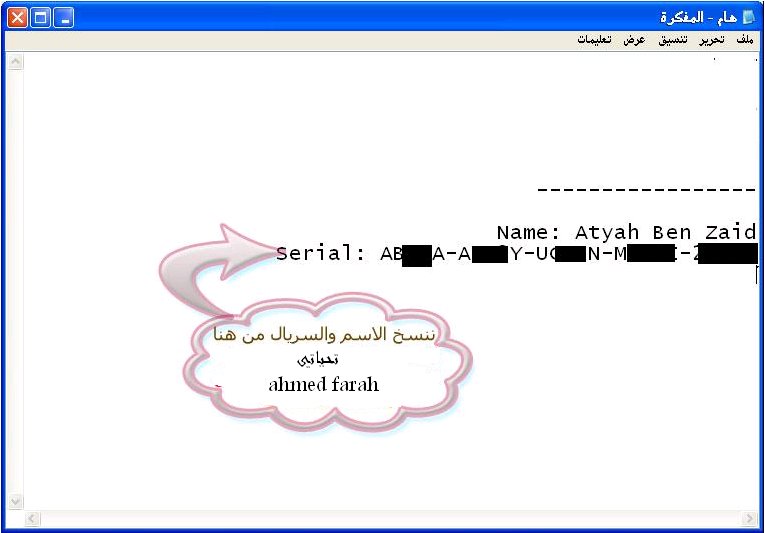


















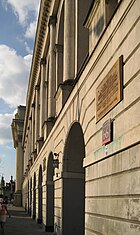


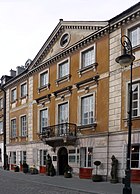
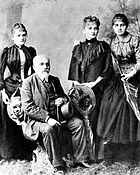
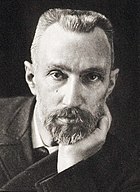
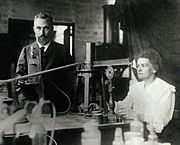




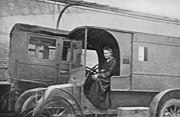

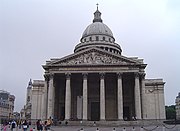









 :educ4 0_smilies_24::educ40_smil ies_26:
:educ4 0_smilies_24::educ40_smil ies_26: